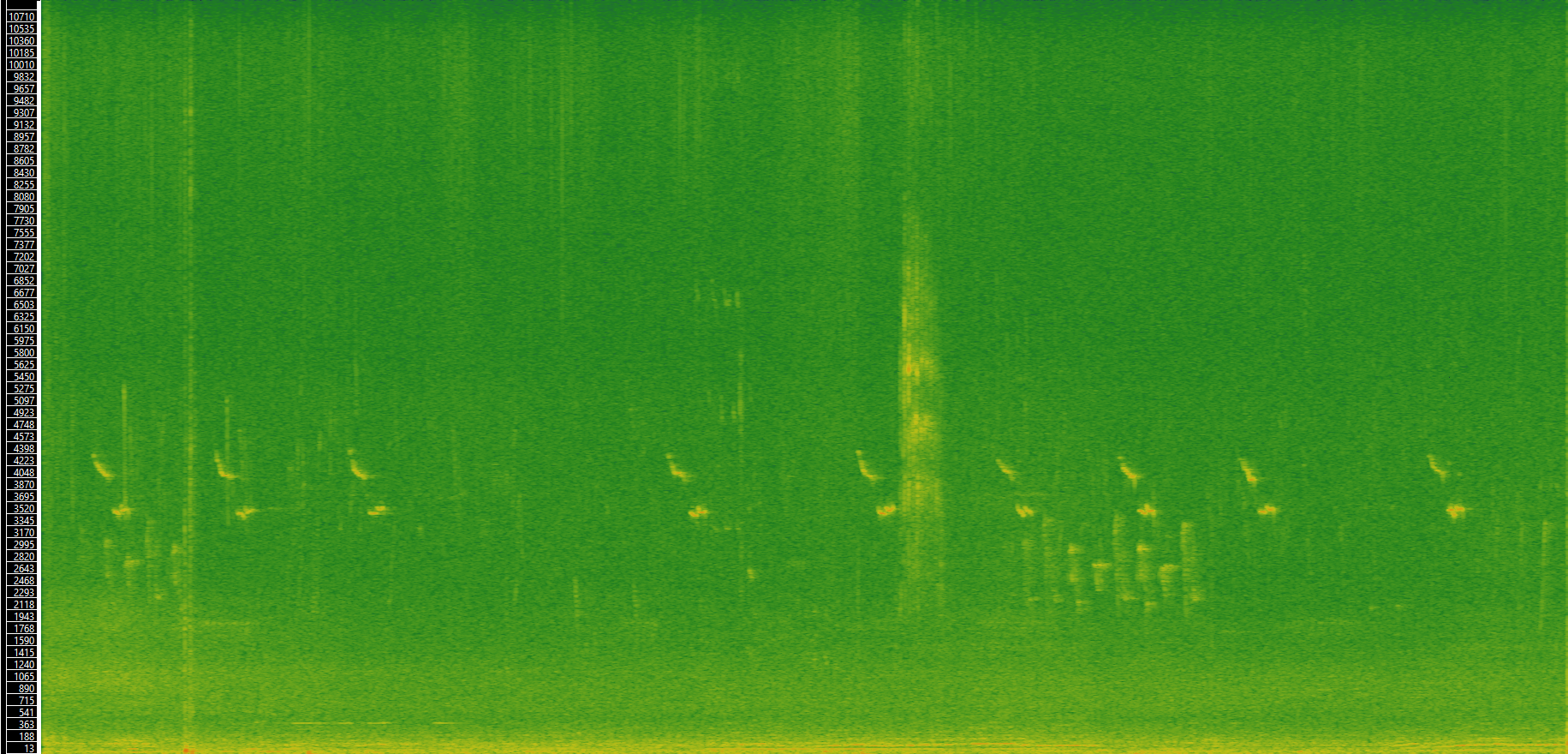Each year, when spring springs, Sarah and I rekindle conversation about the song of the black-capped chickadee. I once referred this particular species as a “minor-third bird,” since it’s call, as I heard it, consisted of a descending minor third. Sarah scoffed and said that I should be embarrassed. “It is clearly a descending major second and you, a teacher of aural skills, ought to be ashamed of yourself!” (Or something to that effect.) I asked my father to weigh in on it, but the upper of the two pitches coming from his own yard was a little out of his aural range.
This year I decided to do a bit of research and found that the interval isn’t as consistent as any of us had assumed. It varies from one region to the next and from one individual to the next. A single bird might even change the interval gradually over the course of a season. And, of course, it’s unlikely that these chickadees were fitting their songs to an equal-tempered dodecaphonic tuning system.
After lunch this afternoon, I heard one in the yard and recorded it for posterity. Amidst all the other bird/traffic/neighborhood noise, you can hear a solitary chickadee singing it’s signature tune. (Sarah wasn’t interested in sticking around. You can hear her closing the back door a few seconds into the recording.)
I wanted to know exactly what pitches this chickadee was singing, so I fed the recording into Sonic Visualiser. I added a spectrogram layer and tweaked the settings a bit to “focus” the image. Here’s what came out:
If you listen to the recording above while following along with the image from left to right, you should be able to “see” the sounds you’re hearing. (Click the image to see it full size.) Each of those little pairs of yellow lines is one two-note chickadee call.
Let’s take a closer look/look. Here’s a clip with just the first chickadee call:
If that’s hard to hear, here’s a pitched-down version of the same clip:
(This one is at half speed, so the entire thing is pitched down one octave.)
Here’s zoomed-in spectrograph of just that first call (the numbers on the left-hand side indicate the pitch in Hz of any sound event depicted in the graph):
As the spectrogram shows, the song consists of two tones, the first of which does a kind of downward bend. The first tone starts at ~4374 Hz (C#8 minus 25 cents) and descends to ~4090 Hz (C8 minus 41 cents). The second tone is more stable, focused at ~3547 Hz (A7 plus 14 cents). The interval between the two tones, then, depends on which part of the upper tone is used to make the measurement.
Measuring from the onset of the upper tone to the lower tone, the interval is ~361 cents (more than a quarter-tone larger than a minor third). Measuring from the conclusion of the upper tone to the lower tone, the interval is ~245 cents (about a quarter-tone smaller than a major second).
So, on this particular day at this particular location in this particular part of the country, this particular chickadee was singing range of intervals, depending on how you heard it. In the end, neither of us was right!

